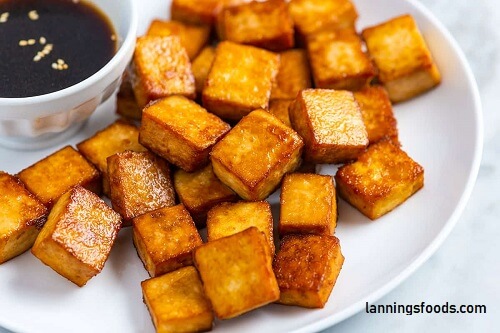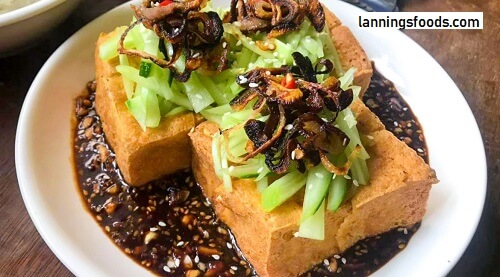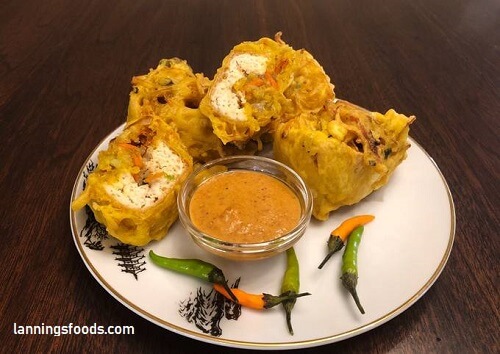This is an article celebrating silken tofu.
Recipe for Tahu Featuring Silken Tofu in Honour This week on Basically, we’re going to go deep into tofu—one of our favorite ingredients. Get all of this (plus more) in paper before it goes online by subscribing to our magazine.
I just went by a daring restaurant that was advertising its “tofu burrata.” Such analogies cause me conflict. Of course, it makes sense to link less well-known dishes to those that are consumed more frequently.
Tofu is also prepared in a way that is a lot like making cheese but with fresh soy milk in place of dairy. If I had ordered that tofu dish, it would have been perfectly set, silky, and custardy, like a burrata or fresh ricotta.
Tahu Recipe With Celebrating Silken Tofu:
But I can’t help but wonder if some people’s dislike of tofu and their irrational expectations of it are a result of these kinds of parallels. You would be disappointed if you were expecting tofu to melt, ooze, or act as a stand-in for steak or chicken. But if you accept it for what it is, even the most basic supermarket tofu can be dressed up or down for any kind of occasion. Tofu is a real star in and of itself—it’s nourishing, resilient, and flexible.

Whole Foods and other large grocery stores carry tofu in several forms. But I’m focussing on the silken sort for the time being. In summary, fresh soy milk is used to make tofu, which is then squeezed to produce varying levels of hardness after being set into curds. In Japan, this process is typically carried out with a mineral coagulant called nigari. Extra- or super-firm tofu, which is the firmest variety, is commonly used in Western cuisine as a type of meat substitute, either marinated, breaded, or fried.
But tofu isn’t typically overly processed in Japanese cooking; instead, it’s used as a standalone component in soups, braises, and stir-fries. Conversely, silky tofu is not at all pressed and is so tender that it can be eaten with a spoon. I think it makes a beautiful garnish for winter hot pots and summer salads. It performs effectively as a supporting role in sauces and as a binder for meatballs.
Tahu Recipe With Celebrating Silken Tofu:
There will be a tofu aisle in a Japanese supermarket that may rival the yogurt section of a Parisian Monoprix. Imported from Kyoto, brands like Otokomae are so delicious that they should be consumed unadulterated, with just a dab of soy sauce. But this common boxed version is still a useful staple that you should always have on hand (and sometimes even one that stays on the shelf), even if local supermarket provides a more practical brand (like House).
Here are five uses for silken tofu once you’ve obtained it.
1. Transform it into a silky sauce.
My favorite use for silken tofu is in shire, a dish where it’s blended with sesame seeds to make a nutty, sweet sauce for blanched vegetables. Even the most basic carton of tofu becomes elevated with a dash of mirin and some sesame seeds. I apply the formula below, which is derived from my
mom. Transfer roughly 150 grams (⅓ of your block) of silken tofu to a big bowl of vegetables. Add 1 Tbsp of white miso and ground toasted sesame seeds. Store leftovers in the refrigerator and consume them within a few days. Add roughly 1 tsp of mirin (if you don’t have any, use sake and a small amount of sugar). Silken tofu is so delicate that you can do all of this in a bowl with a spoon or chopsticks.
Tahu Recipe With Celebrating Silken Tofu:
This is all to taste, so play about with the amounts to suit your needs. For instance, white miso’s sweetness might vary greatly. Compared to white miso from Kyoto, American supermarket varieties tend to be much saltier. Though my family is from the west of Japan, and we tend to use sweeter seasonings, it’s typical for the shire to only contain sesame seeds, tofu, and soy sauce.

Spread the sauce over whatever blanched vegetable you have once it’s smooth, slightly nutty, and tastes good to you (it will have the consistency of a very light hummus). My favorites are green beans and spinach.
Cook it:
If you’re ambitious, use the remainder of your block to produce age dashi tofu. Apply katakuriko (potato starch) generously to firm silken tofu cubes (about 3 inches in diameter), then shallow-fry them in neutral oil. Keep in mind that silken tofu is delicate, so handle it carefully. Top with a heap of grated daikon and a warm bath of store-bought mentsuyu (or make your own with dashi, soy sauce, and mirin) after the cubes are golden.
Dive into the soup:
I’m more likely to sneak it into whatever soup I’m making because frying is a big task (typically miso-based). It tastes especially delicious warmed through in your next pot of hot pot.
Top it with something punchy:
Tahu Recipe With Celebrating Silken Tofu:
Classic hiyayyako topics include puckery ponzu, chili crisp, and soy sauce (topped with grated ginger and scallions) for chilled silken tofu.
My dream meal is silken tofu topped with toppings.
Hiyayakko is delightful, luscious, endlessly adaptable, and no-cook too.
Make it into dessert:
Turn custardy silken tofu into bouncy dango, a general catchall for rice flour–based Japanese dumplings

Two-Ingredient Chewy, Stretchy, Go-Anywhere Dumplings:
Tahu Recipe With Celebrating Silken Tofu:
The delicious chew of mochi + tofu’s gentle quiver.
Chihiro Tomioka, who writes about all things Japanese at Food, purchases chocolate chip ice cream just for the chocolate chips.
- Tomato and ginger sauce with tofu and eggplant (serves two as a main course or four as a side dish)
- One 250g firm tofu block, chopped into bite-sized pieces; raw sesame oil or rice bran can be used as vegetable oil for frying.
- One medium onion, chopped
- Three crushed garlic cloves and one to two finely chopped fresh red chilies, depending on how much you can handle the heat.
- Three Kaffir lime leaves, chopped tomatoes, 400 (or one can) coarsely shredded
- 1 tsp molasses OR 1 tbsp kecap manis (sweet soy)
- Two tsp tamari, one tiny knob of fresh ginger
- Sliced lime wedge and one medium-sized eggplant (or two Japanese eggplants) should be served.
- A handful of newly picked coriander leaves for decoration